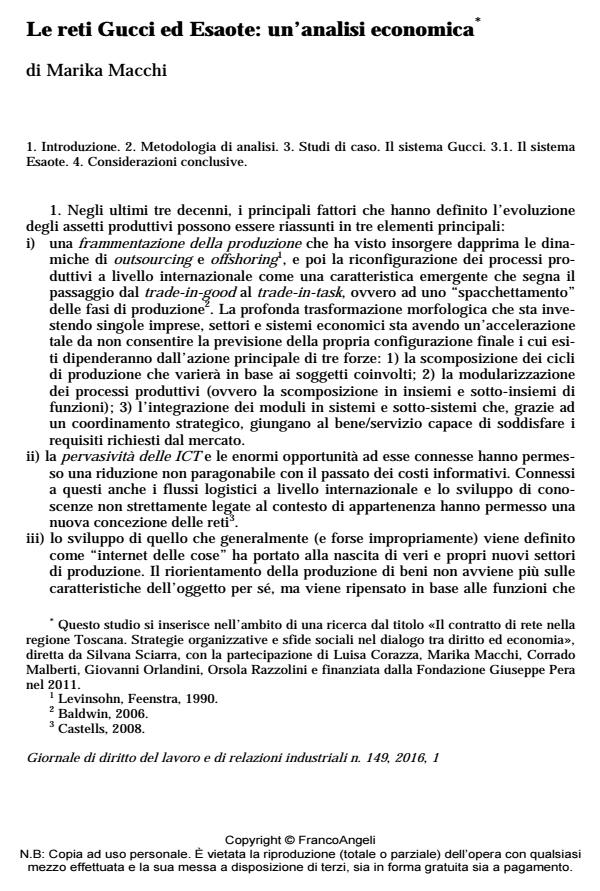Le reti Gucci ed Esaote: un’analisi economica
Journal title GIORNALE DI DIRITTO DEL LAVORO E DI RELAZIONI INDUSTRIALI
Author/s Marika Macchi
Publishing Year 2016 Issue 2016/149
Language Italian Pages 26 P. 79-104 File size 197 KB
DOI 10.3280/GDL2016-149004
DOI is like a bar code for intellectual property: to have more infomation
click here
Below, you can see the article first page
If you want to buy this article in PDF format, you can do it, following the instructions to buy download credits

FrancoAngeli is member of Publishers International Linking Association, Inc (PILA), a not-for-profit association which run the CrossRef service enabling links to and from online scholarly content.
This paper aims to analyze some emerging aspects related to the economic literature on production networks, and detect their evolution in the particular legal instrument of network contracts. The proposed work analyzes four case studies of network contracts in Tuscany (three networks belonging to the "Gucci System" and the network part of Esaote SPA) and seeks to highlight some unique and distinctive futures: functions, the innovation capabilities, human resource management and strategic coordination. The methodology used is a qualitative analysis supported by both sources of primary data (the network contracts) and direct interviews with companies and privileged witnesses of the Tuscan manufacturing sector. The main result of the survey is to draw a reading of network contracts framework. We try to reclassify them according to three different gradients of interaction between agents, and on the types of functions developed: (i) integrated networks through the development of interfunctional coordiantion, (ii) networks aimed at developing innovative processes; (iii) networks that can be integrated into a true strategic coordination.
Keywords: Network contracts; Strategic coordination; Gucci system; Global value chain; Cross-fertilization processes.
Marika Macchi, Le reti Gucci ed Esaote: un’analisi economica in "GIORNALE DI DIRITTO DEL LAVORO E DI RELAZIONI INDUSTRIALI " 149/2016, pp 79-104, DOI: 10.3280/GDL2016-149004